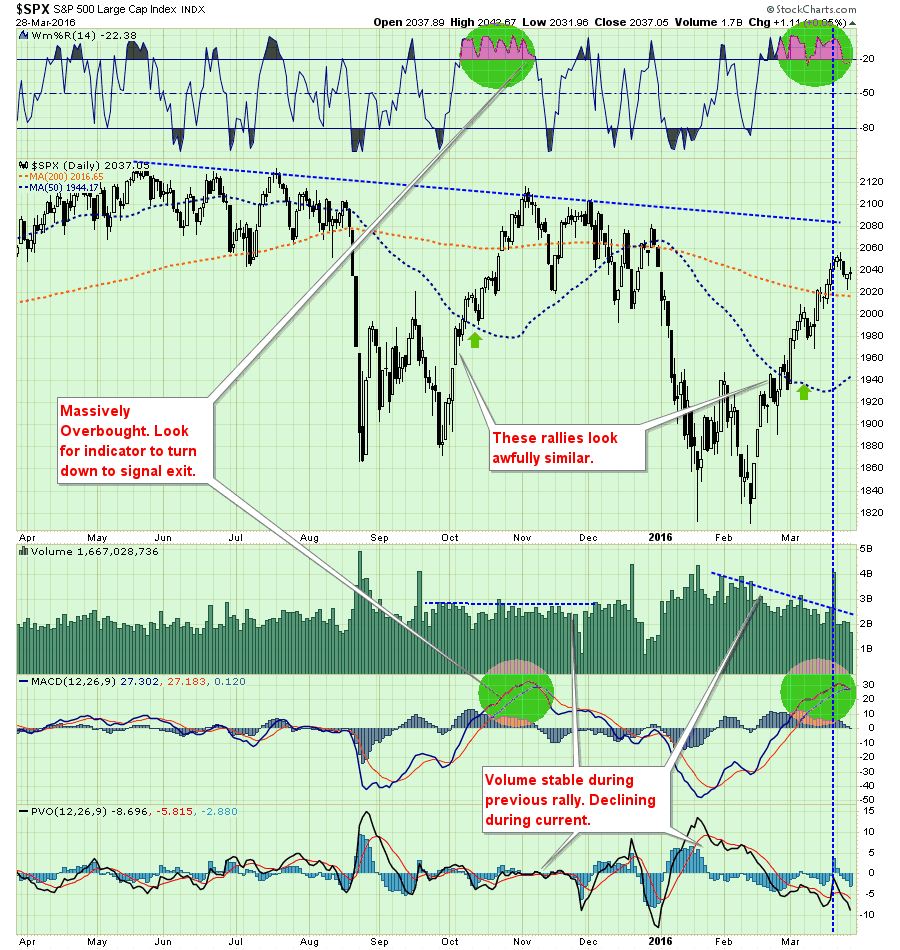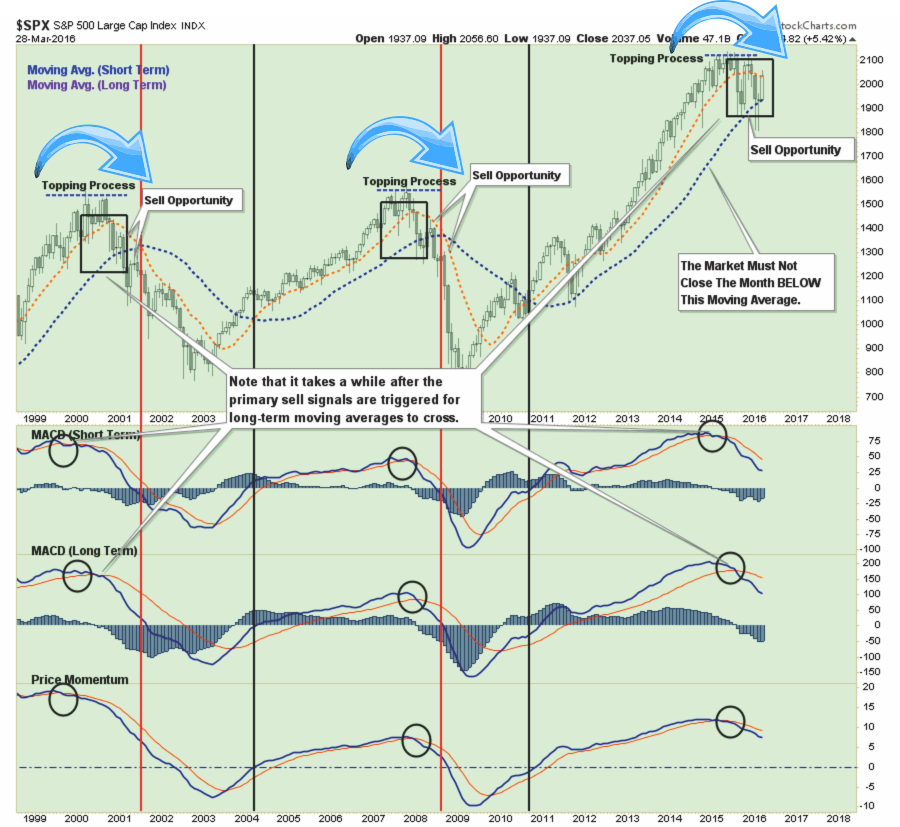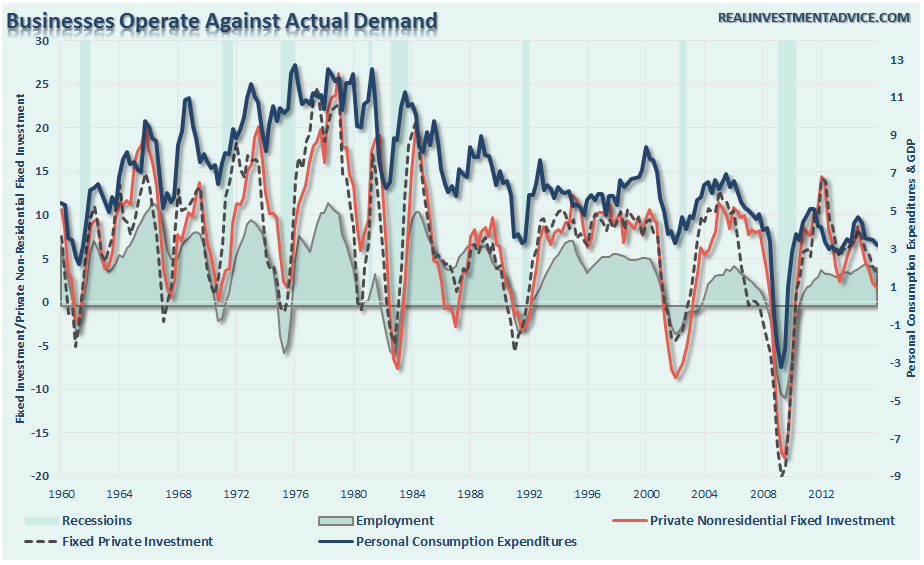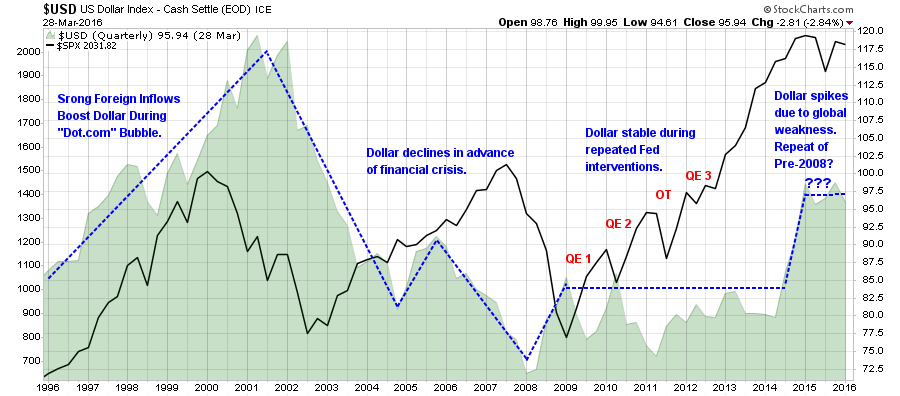Before I get to the “Dollar Paradox,” let’s take a look at the technical backdrop from last week to identify any important short-term changes to the overall outlook.
As I noted:
“While my “emotions” are currently screaming to start increasing equity allocations at this juncture, there are several reasons why my discipline is keeping me from doing so currently:
- The market is GROSSLY overbought in the short-term and will have either a mild corrective process or consolidation to allow for an increase in equity exposure.
- Negative trends are still in place which suggests the current rally, while significant, remains within the context of a reflexive rally.
- Volume is declining on the rally suggesting a lack of conviction.
- This rally looks very similar to the rally last October except the fundamentals are substantially weaker.”
Has anything changed?

The short answer is “No.”
However, it is worth noting that the two indicators (green highlighted circles) are extremely close to turning down just as they did last November, which signaled the end of the bullish reversal at that time.
Despite the very sharp “March rally,” there is little evidence that the “bullish trend” has been re-established at this point. We can view this more clearly by stepping back and viewing a longer-term (monthly) chart of the market.
As shown in both charts above, on both a short and long-term basis, the market continues to exhibit more “bearish” than “bullish” behavior…for now. The recent rally, while strong in terms of price movement, was driven primarily by a massive liquidation of short positions. However, with a bulk of that “fuel” now depleted, economic and fundamental data still very weak, and the majority of Central Bank actions now behind us, there is little impetus at the moment for higher equity prices.
The over-estimation to housing, manufacturing and hiring data in recent weeks, due to the lack of inclement weather during an unseasonably warm winter, will reverse as we move into more traditional Spring weather patterns. What is even more disturbing is the lack of personal consumption expenditure growth during a period normally adjusted for inclement weather where spending tends to be reduced.
Since businesses operate on “demand,” the drop in PCE aligns with the declines in fixed investment and, ultimately, employment by businesses. (Businesses abhor terminating employees and, therefore, focus on all other areas of cost cutting first. This is why jobless claims fall to extremely low levels during late-stage economic cycles as companies “hoard labor.”)
Currently, there is little reason to become more aggressively “bullish” with equity exposure. All evidence continues to suggest a market that is experiencing a more substantial “topping process” leading to a longer-term “trend change.” If this process is reversed, it will require an increase to equity exposure, however, as of now, there is little evidence to suggest that such a reversal is in process.
THE DOLLAR PARADOX
It is interesting to listen to the media when it comes to the dollar. When the dollar was near historical lows, the chatter from the media, Congressional members, and many others was that a “strong dollar policy” was needed to create a stronger economic environment. I suggested then such an idea was “wrong-headed” given the weak economic underpinnings and that a strong dollar would be an anathema to future growth.
Flash forward to today, the strong dollar has dragged on economic growth, reduce exports, weighed on corporate profits and crushed the energy complex. Now, everyone is hoping for a weaker dollar to boost corporate profits and raise oil prices.
You can’t have it both ways.
There is also one other point about the dollar that should be revisited. The chart below is a long-term chart of the dollar as compared to the S&P 500 index.
The dollar is a representation of the demand for USD-denominated assets. During a strong and stable economic environment, foreign capital flows to the US seeking higher rates of return on invested assets. This was clearly seen in the late 90’s as money poured into the U.S. chasing the “internet boom.” However, following the crash, the flows of foreign capital sharply reversed as the “bear market” set in and economic slowed.
Interestingly, during the “housing bubble,” the dollar rose temporarily. However, as the mortgage security bubble grew globally, foreign fund inflows slowed as investments remained more locally domiciled. This time, the weakness in the dollar preceded the eventual collapse in the market and the economy.
Not surprisingly, following the “financial crisis,” the lack of both domestic and global economic growth, kept the dollar mired at lower levels despite repeated Federal Reserve interventions. While profits soared for companies, driven primarily by cost cutting, wage suppression, share buybacks and accounting gimmicks, there was little economic growth to be found and little reason to attract foreign capital flows.
The recent spike in the dollar began as the Federal Reserve ended its monetary interventions and began discussing hiking interest rates. This is interesting from the standpoint that every other Central Bank is in a race to lower rates and go into negative interest-rate territory. Not surprisingly, money has flowed into the U.S. dollar seeking a higher return environment not because of stronger economic growth but because of the threat of negative interest rates globally.
If the dollar does weaken, which there is little evidence of that occurring currently, it will very likely be the result of a sharp decline in asset prices, which forces foreign capital back out of U.S.-denominated assets.
The paradox is that by pushing the dollar up to chase a better “yield,” the underpinnings may have been set for the next major market reversion. In other words, the hopes of a “weaker” dollar may coincide with very negative equity returns as was last seen during the “financial crisis.”



